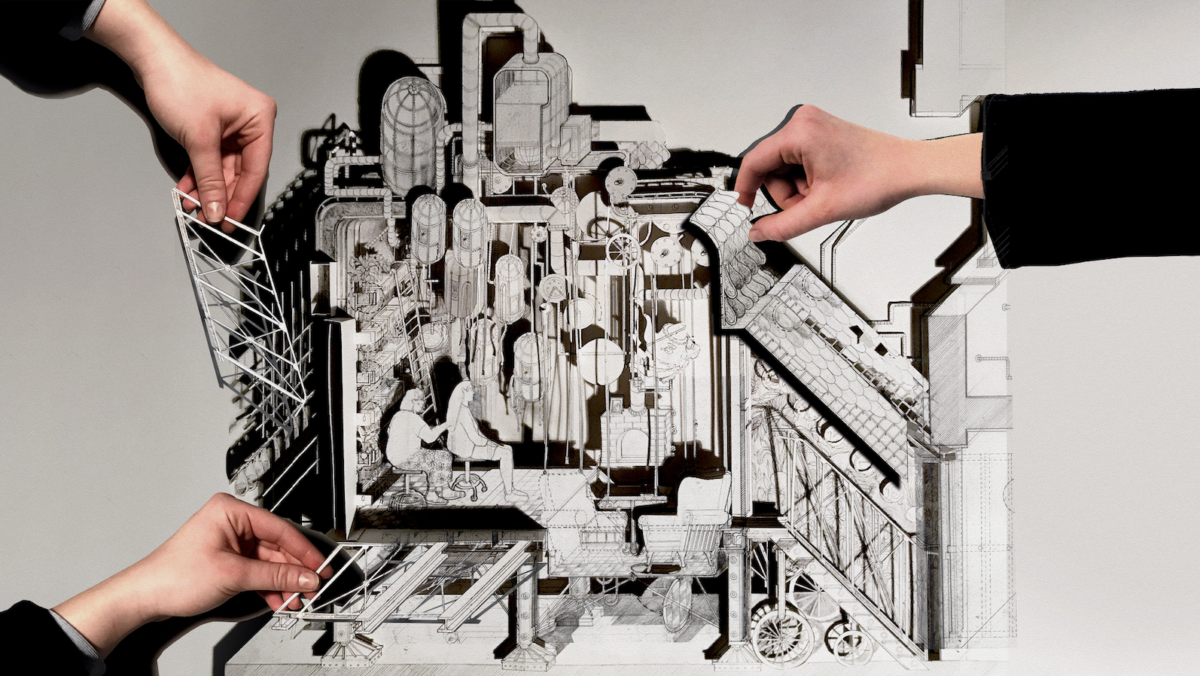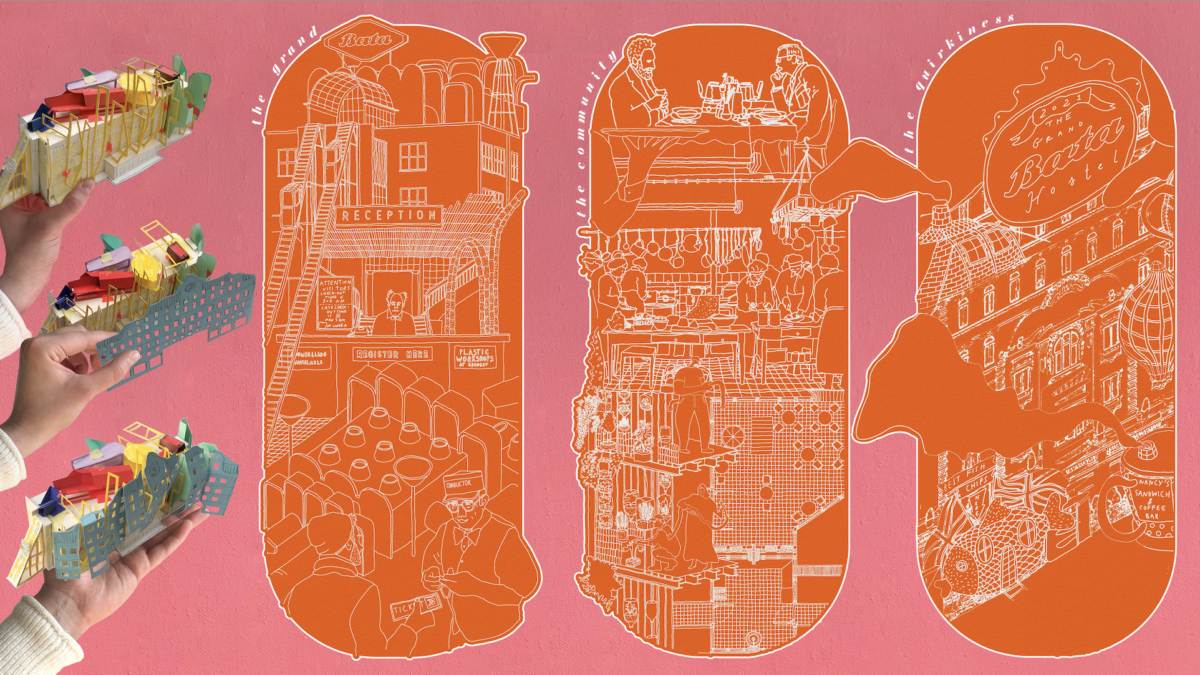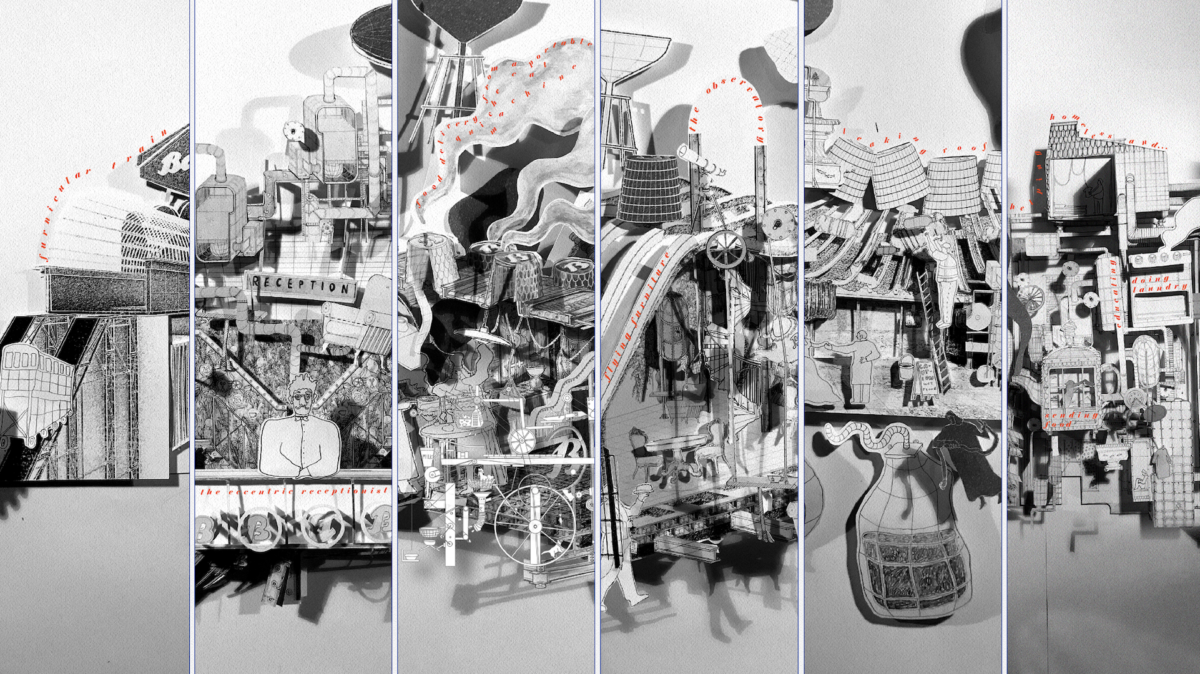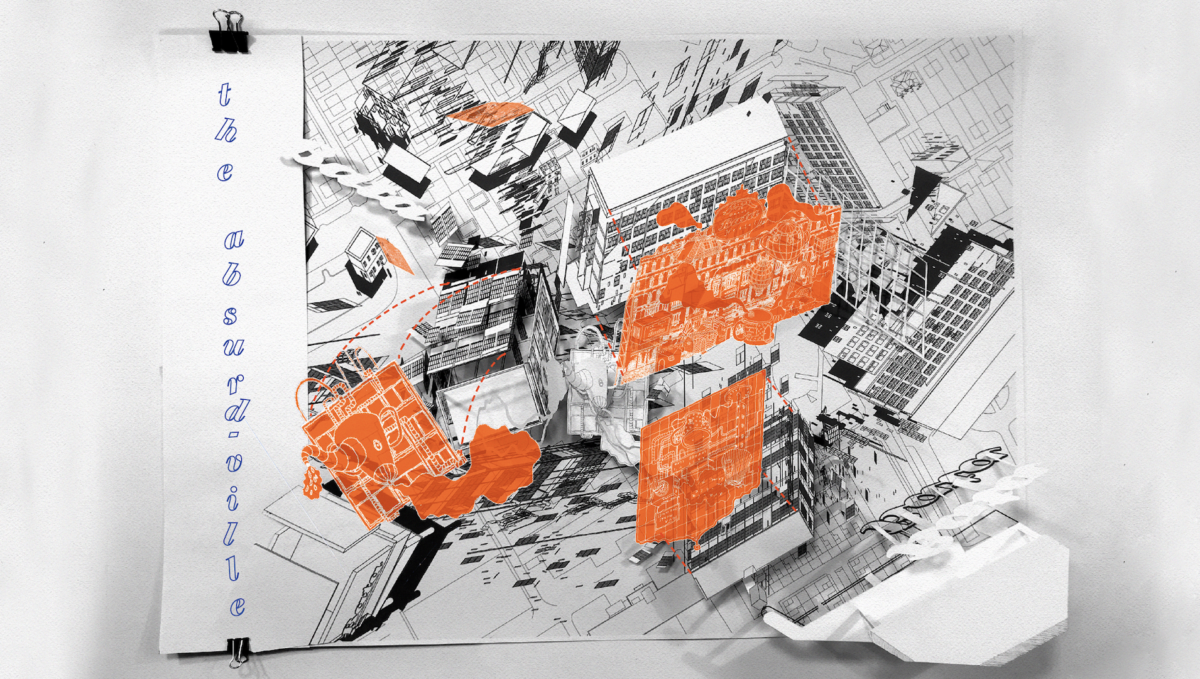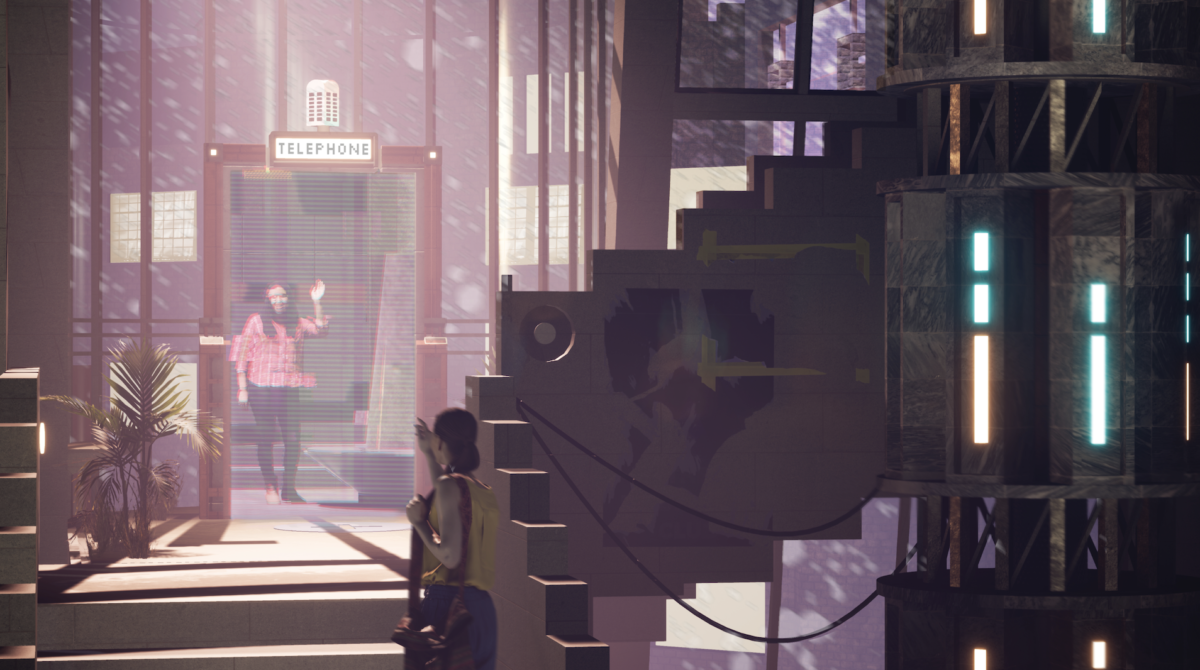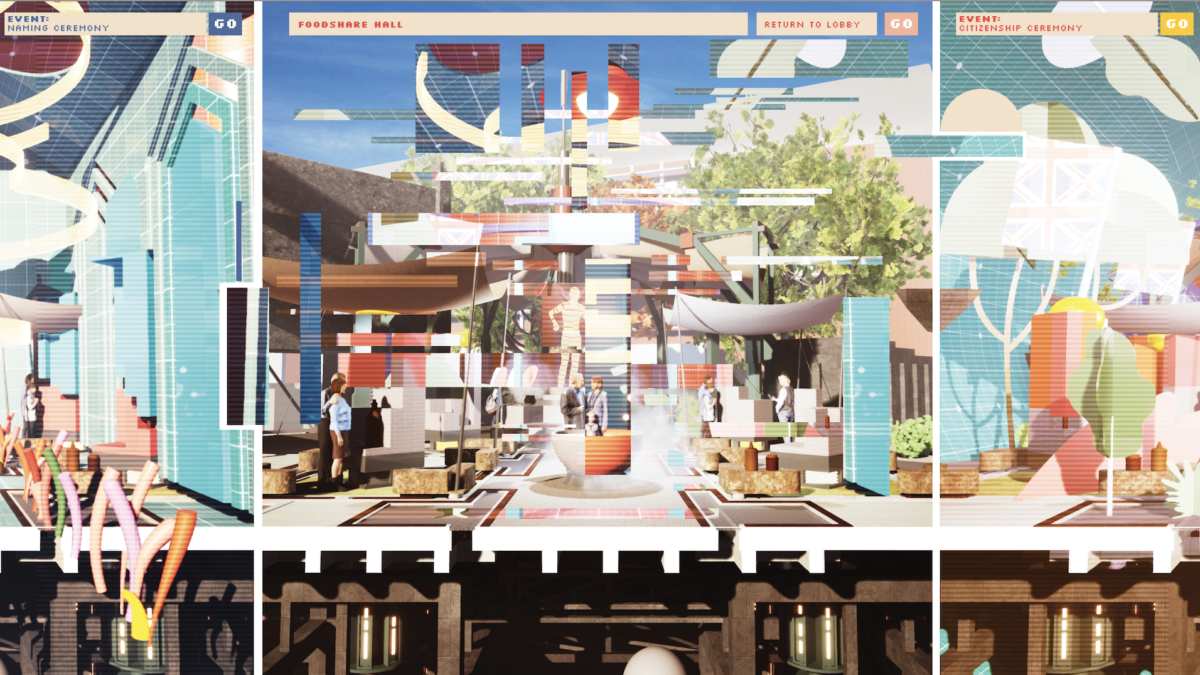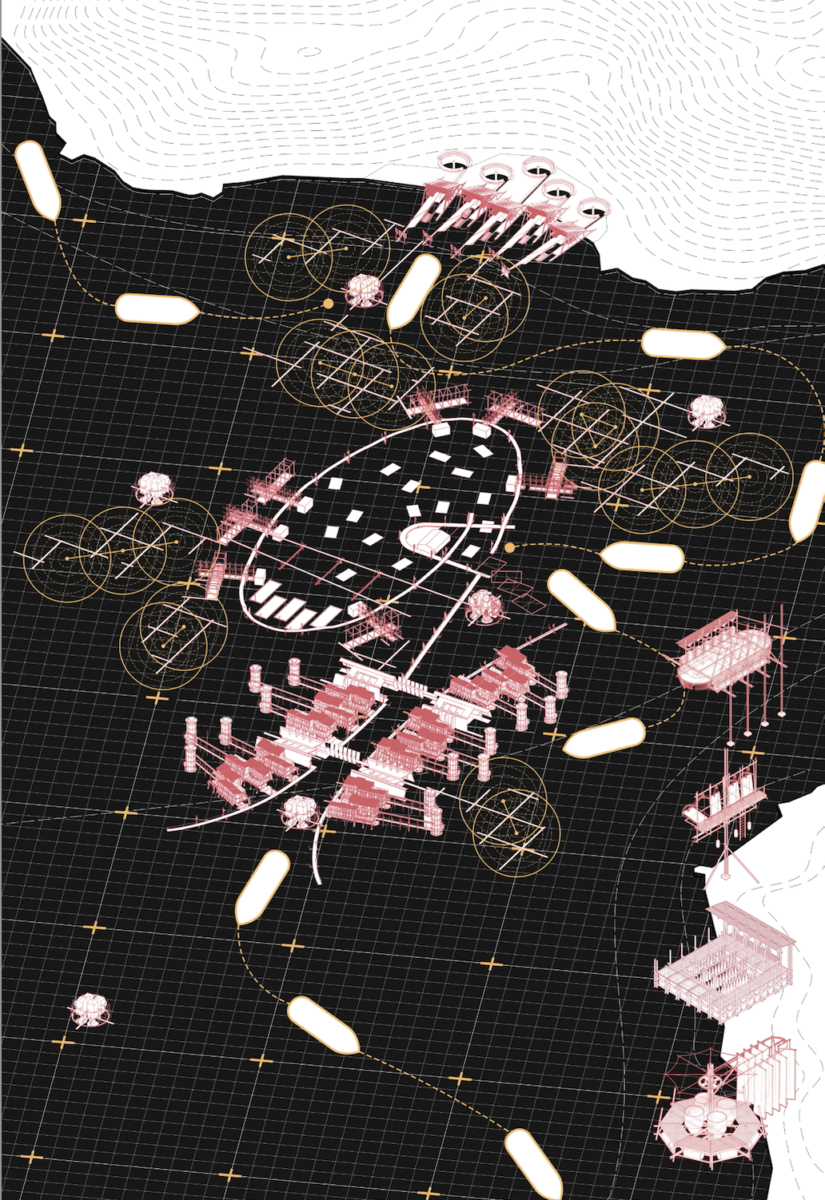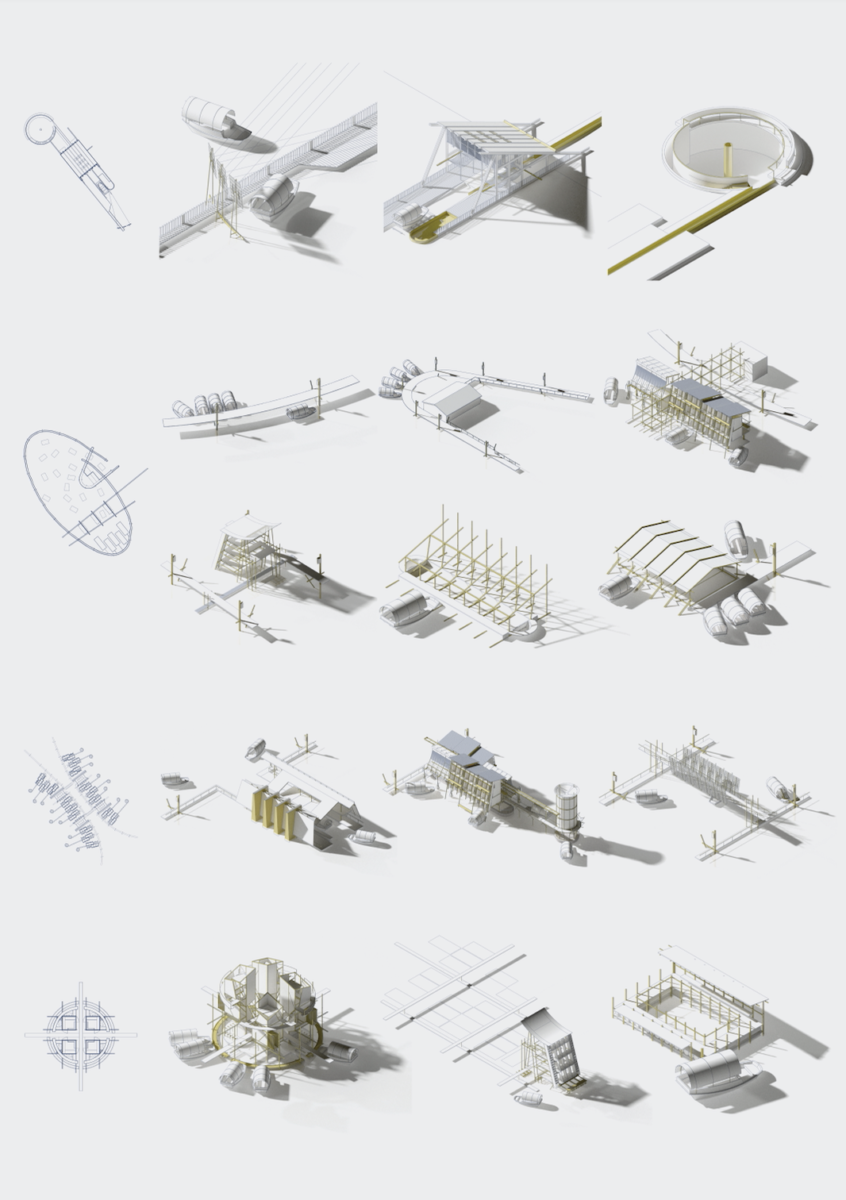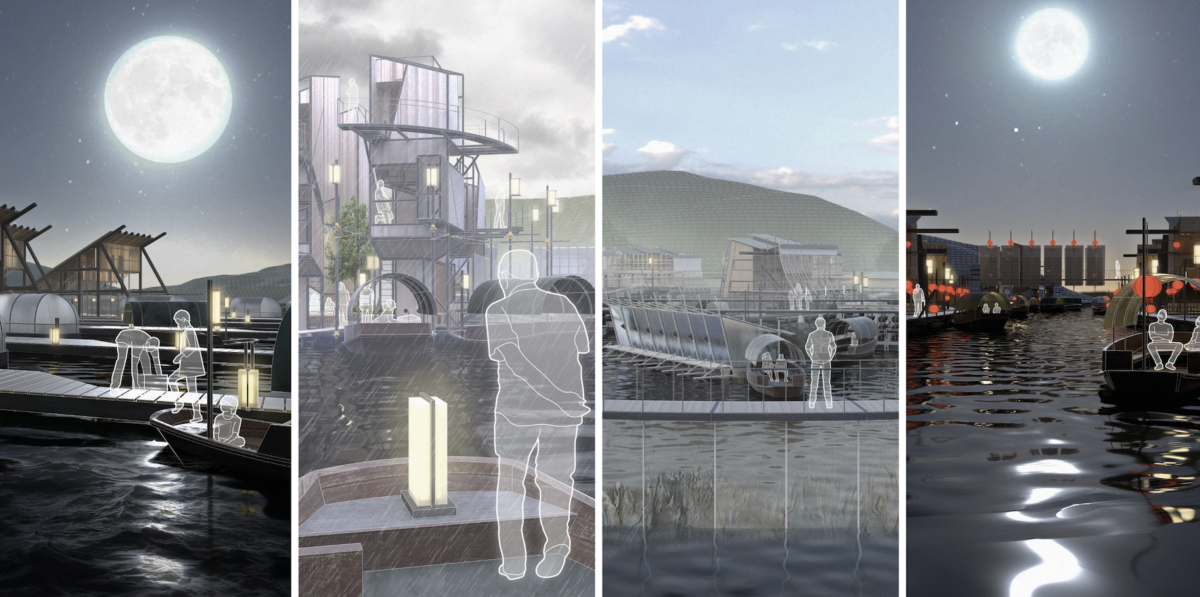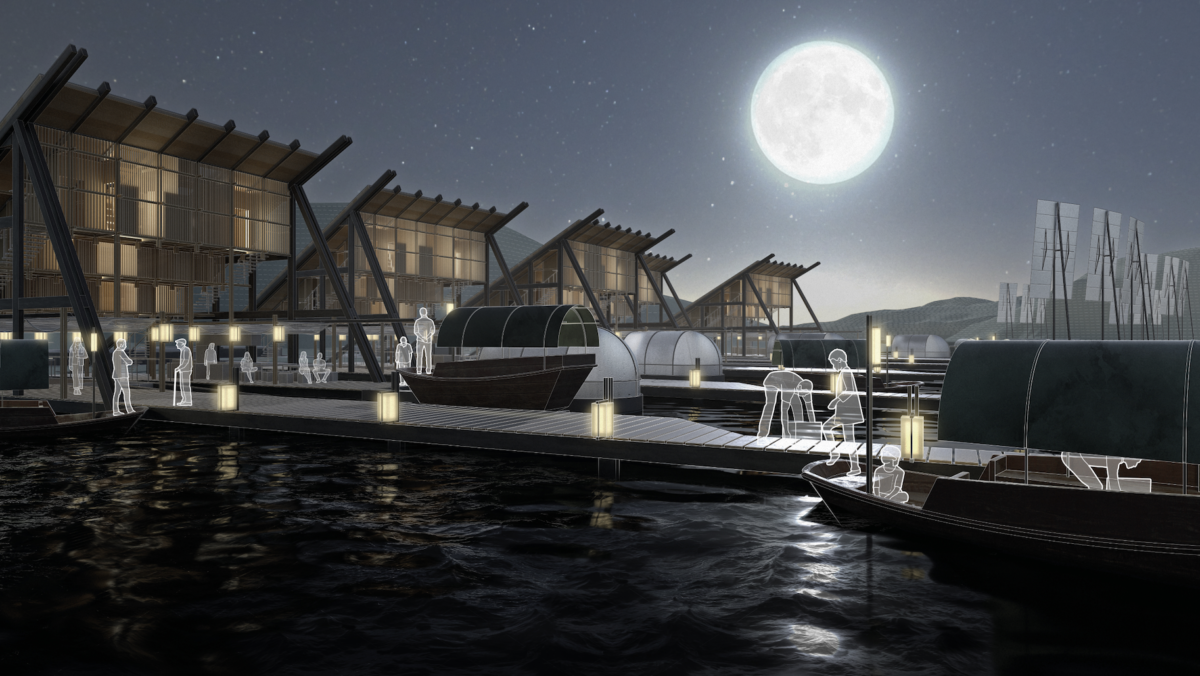Author: admin

a festival of the mundane
During his lifetime the Dutch painter Johannes Vermeer completed around 50 paintings of which 35 survive today. Most of the paintings depict domestic scenes. It is remarkable that 19 were painted in the same room, showing often the same people. The scenes involve normal people doing ordinary things. But looking closer each element has been carefully chosen, playing a predetermined part in an everyday story. The real subjects of Vermeer’s paintings are not the characters depicted; it is the everyday space, the light, the materiality. Being ‘mundane’ is usually not a compliment, it’s seen to be dull, lacking interest or excitement.
This year PG13 will explore the ‘Everyday’ – looking in detail at how we live together and inhabit space, the routines informing architectures. The Everyday doesn’t need to be boring, it is you who must elevate it to greatness using imagination and innovation.
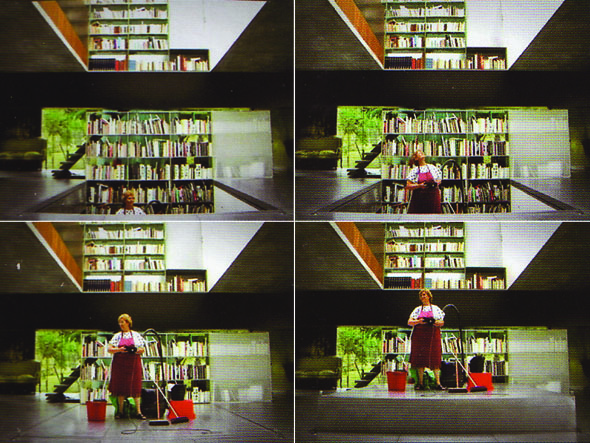
Stills from Koolhaas Houselife, Bêka Ila and Lemoîne Louise, Bekafilms, 2008
The film follows the housekeeper Guadalupe Acedo through her daily routines of looking after the house designed by Rem Koolhaas.
Interview with the filmmakers on YouTube:
Trailer on Youtube:
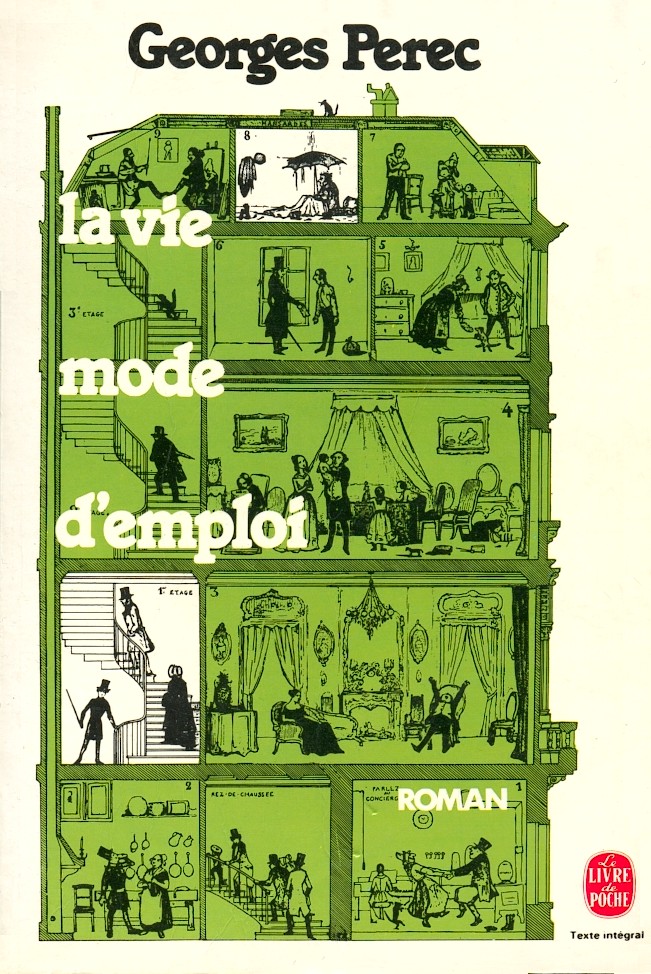
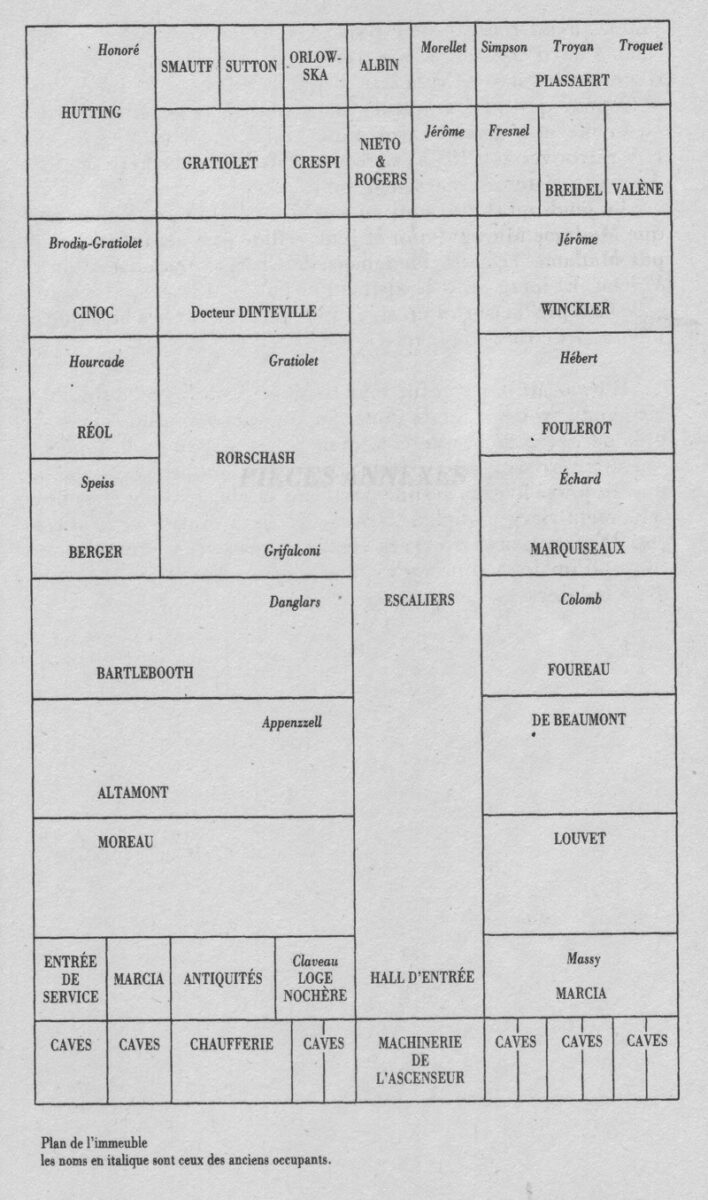
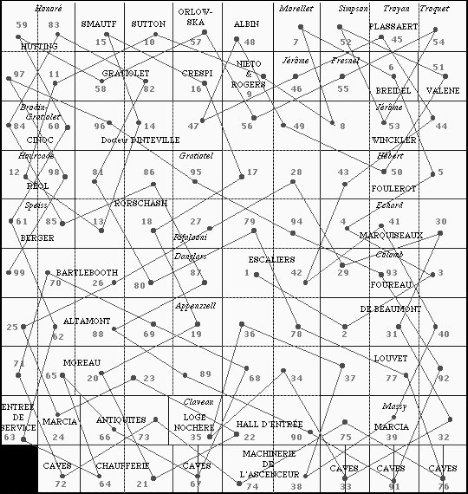
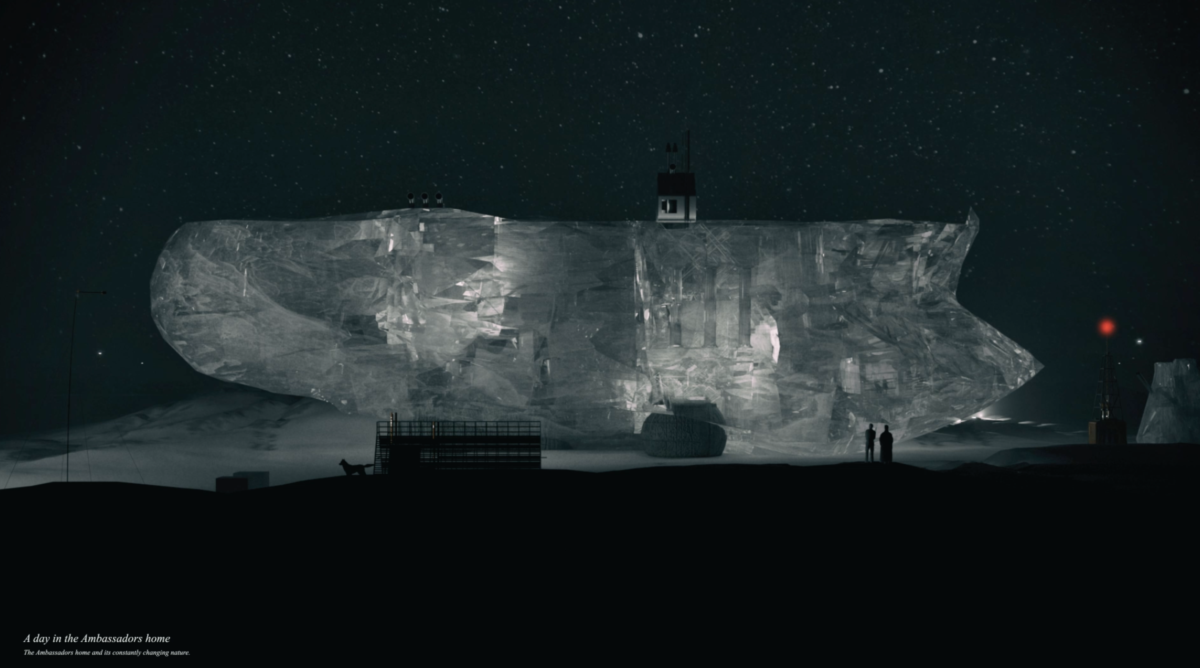
The Embassy of No-land
The project begins by considering how the timely aspect of our constantly changing nature affect our built environment. It is particularly focused on the notion of transitions. This project explores how this type of dynamic, that being a change in environmental or social conditions, could create a stronger symbiosis between the built and natural environment. The project situates itself in the High Arctic, in Svalbard, and takes its inspiration and initiation point in the Svalbard Global Seed bank. A doomsday vault designed to secure our future food supply against any imagined danger. However, like the environment it is situated within, the vault is under threat by the unpredictable long-term geophysical modifications brought about by the melting of ice. The project picks up on these problems and speculates in an alternative future for the vault. This time as an embassy, represented by a new country every year. Through six narratives from different scales and perspectives – the project speculates on how architecture can create a stronger symbiosis with the natural environment that it inhabits. As a results, it creates an infrastructure built on the natural transitions and an architecture which are growing and eroding with the seasonal and social changes.
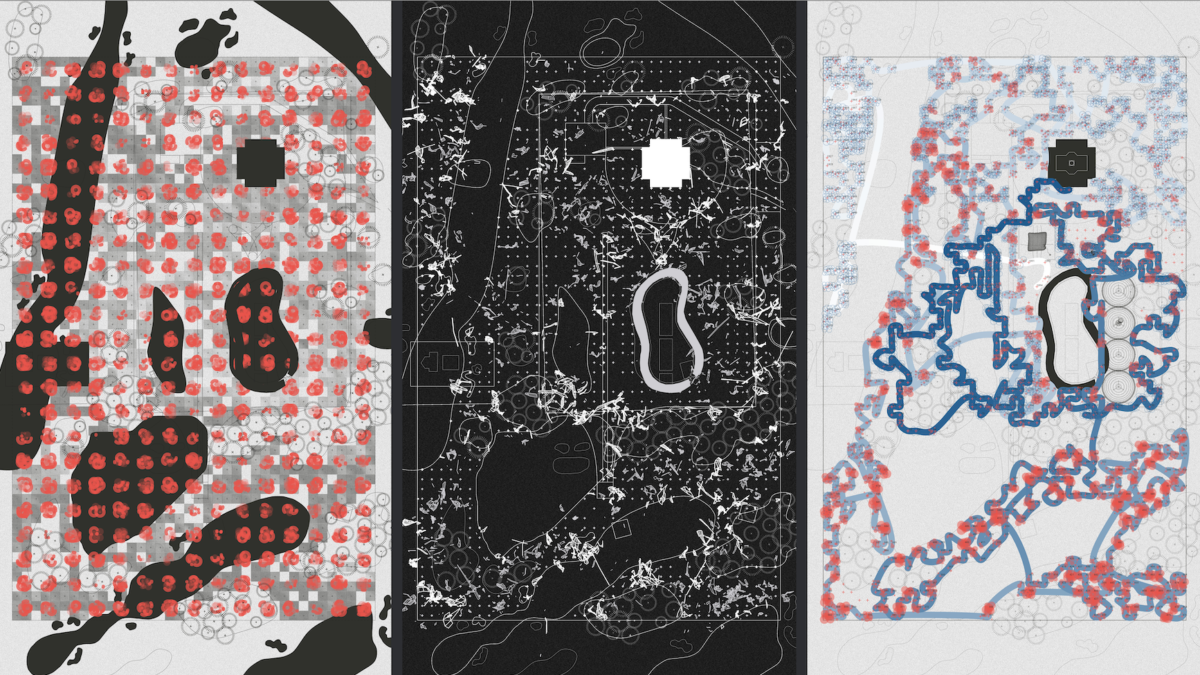
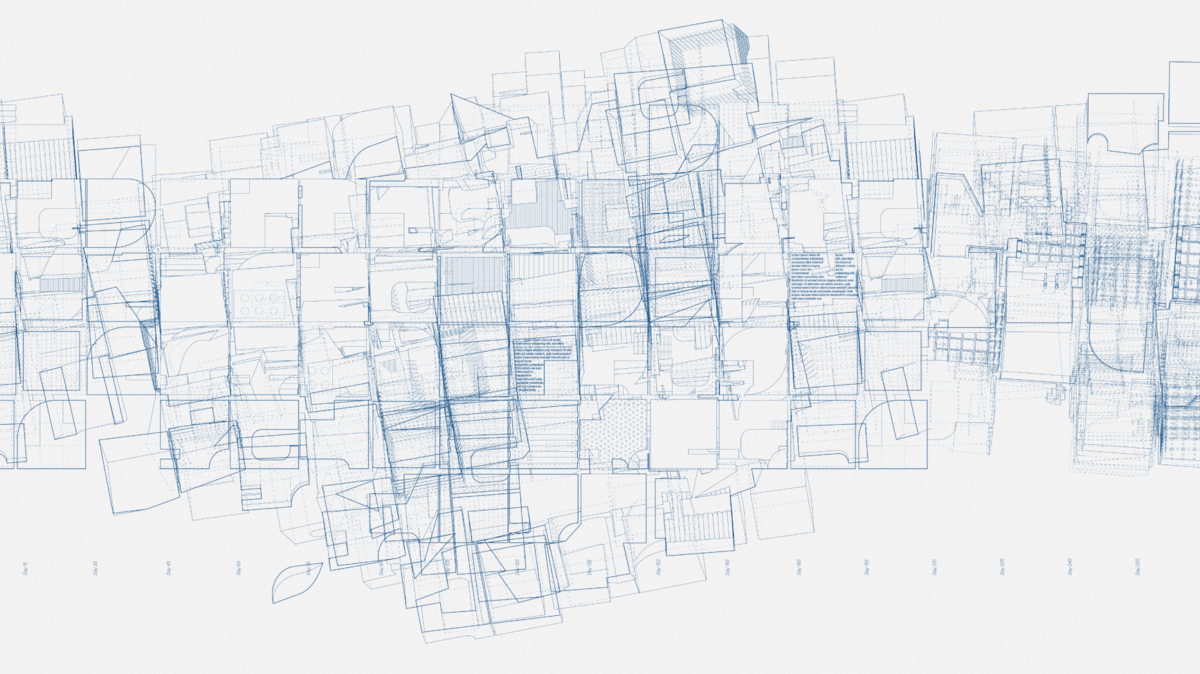
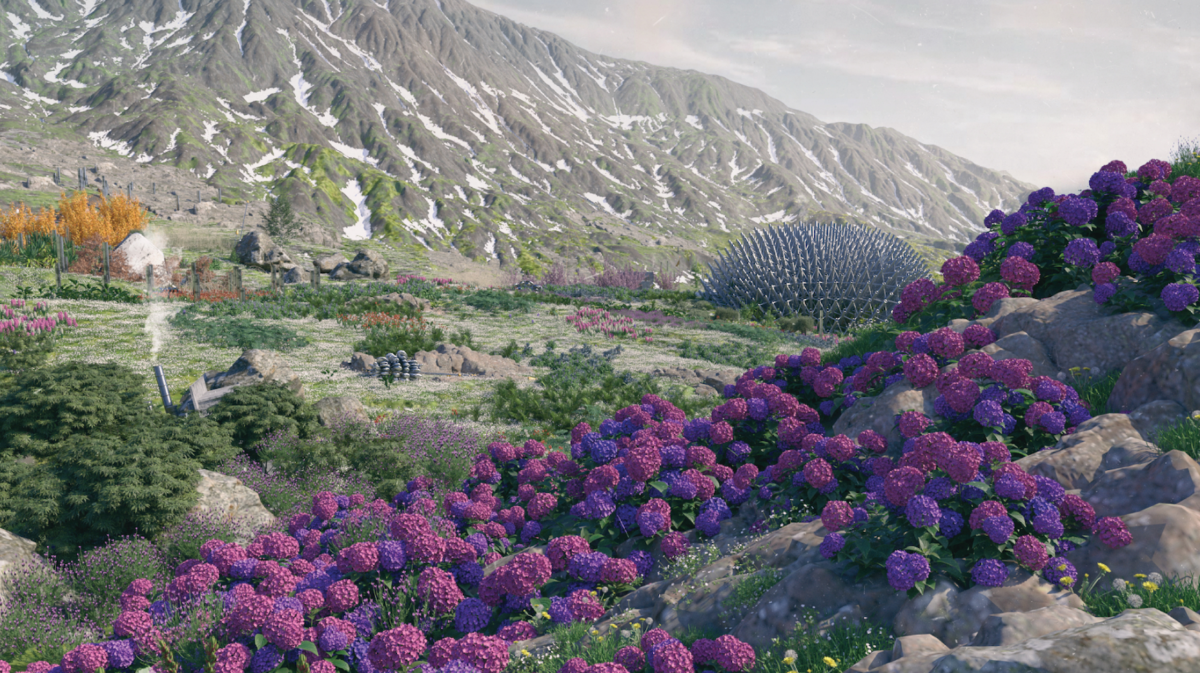
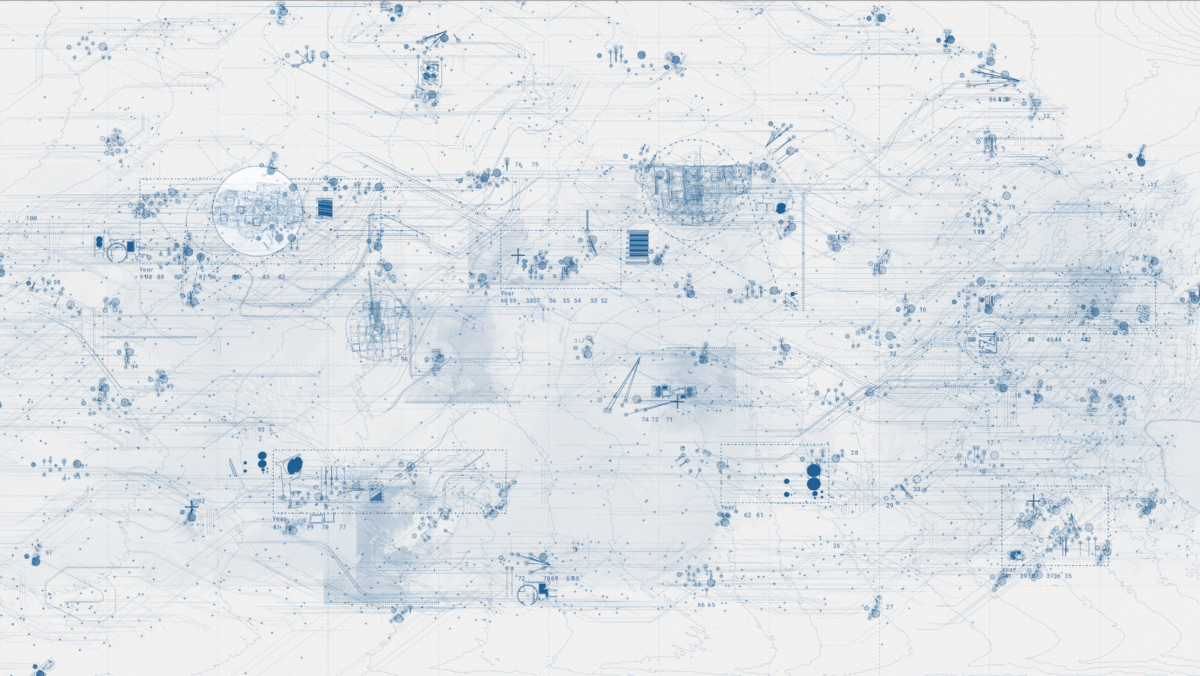
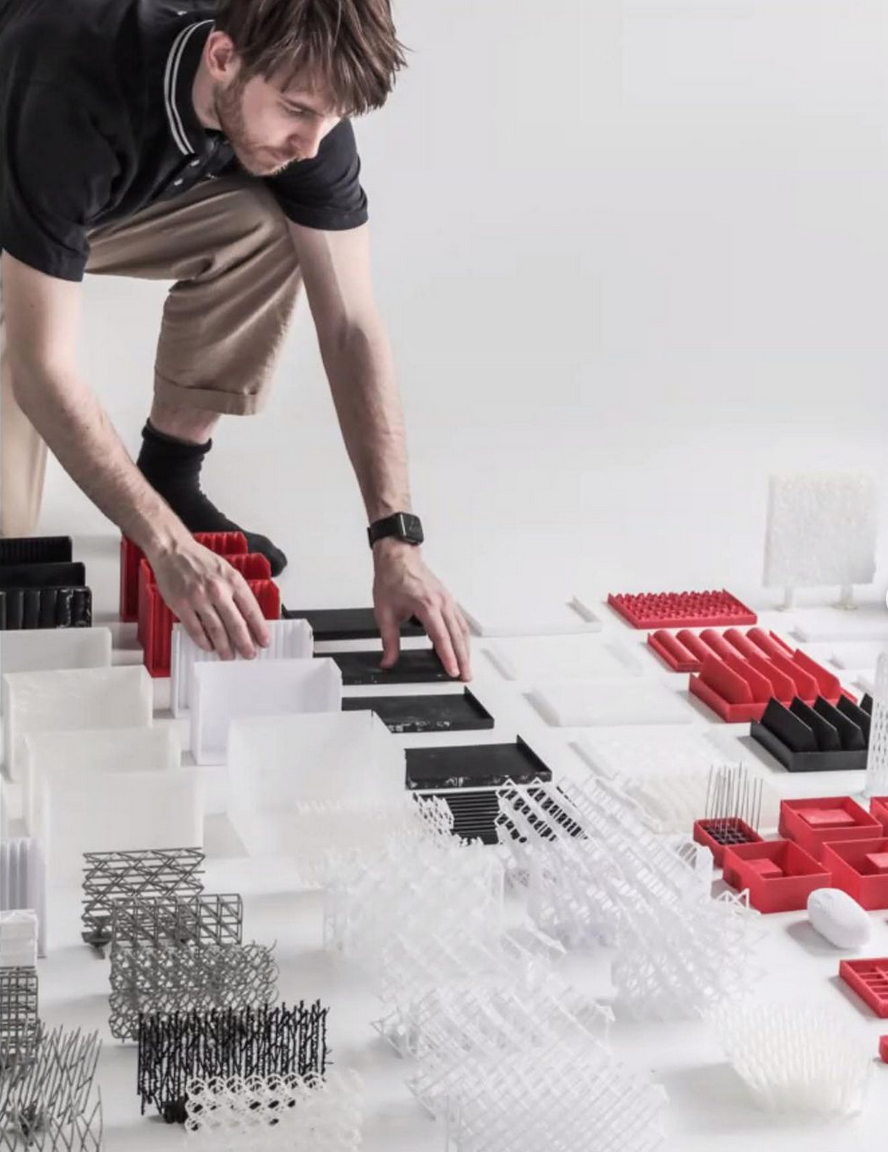
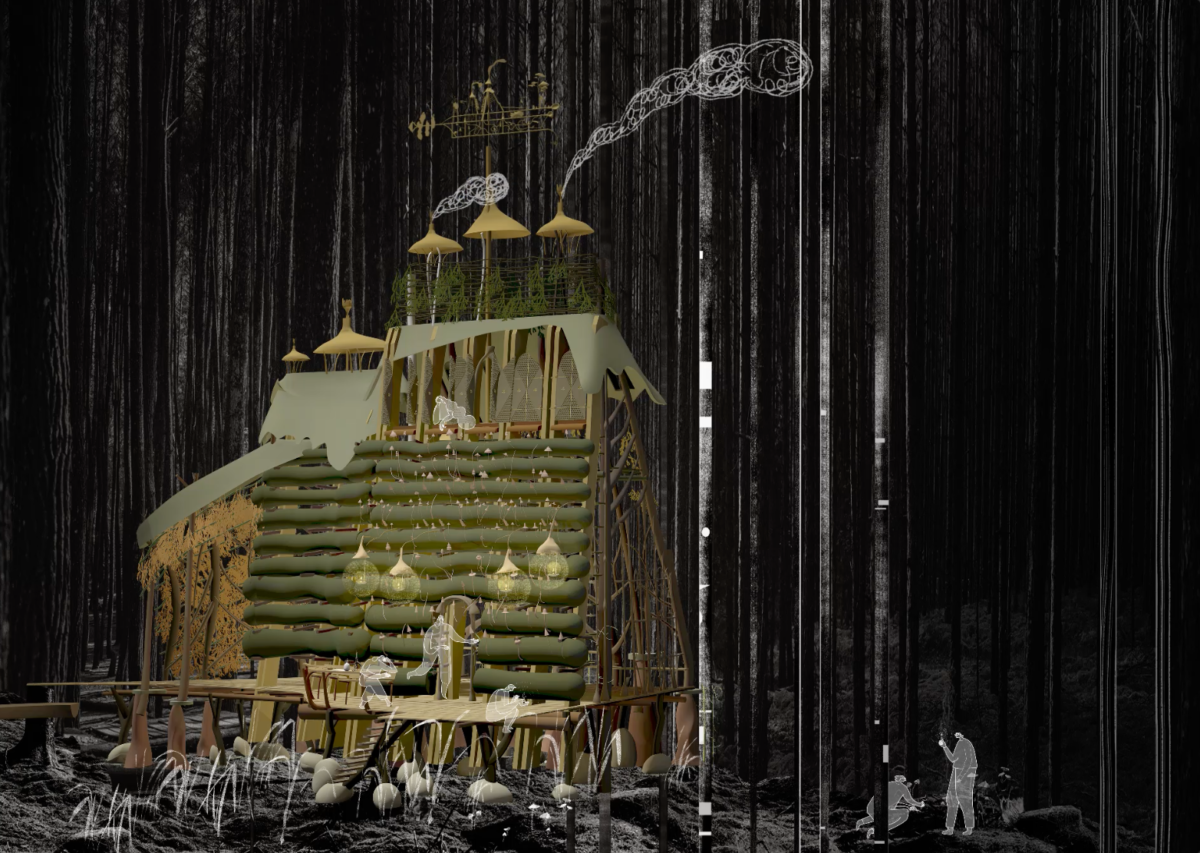
Crafting a Lithuanian forest: A journey of making oneself in a cultural landscape
‘Crafting a Lithuanian Forest’ examines a reciprocal relationship between people and the forest, through the practice of traditional woodworking that is concerned with who the maker is becoming, and what it is in the making. The project is a commentary on industrial forest practices that take place in the Lithuanian territory of the Curonian Spit, which is protected by UNESCO World Heritage as a unique cultural landscape. It was developed with relentless human efforts over a hundred years to manage natural geomorphological processes—shifting sand dunes. This Lithuanian forest, like many others, is suffering from clear-cutting that is destroying centennial trees and their unique ecosystems. Time for this cultural landscape is running out, and its forest needs urgent social care. The project introduces hand-carved forest structures, that enable people to experience the forest, reminding us of our caring responsibilities: to maintain, restore and sustain. From delicately carved pines that were shaped by shifting sand, to the hand-crafted window and door hinges, all celebrate the cultural landscape, where everything that came from the forest remains in the forest. Storytelling becomes a form of sharing this craft-based knowledge through intergenerational interactions, that create a future for an old-growth forest.
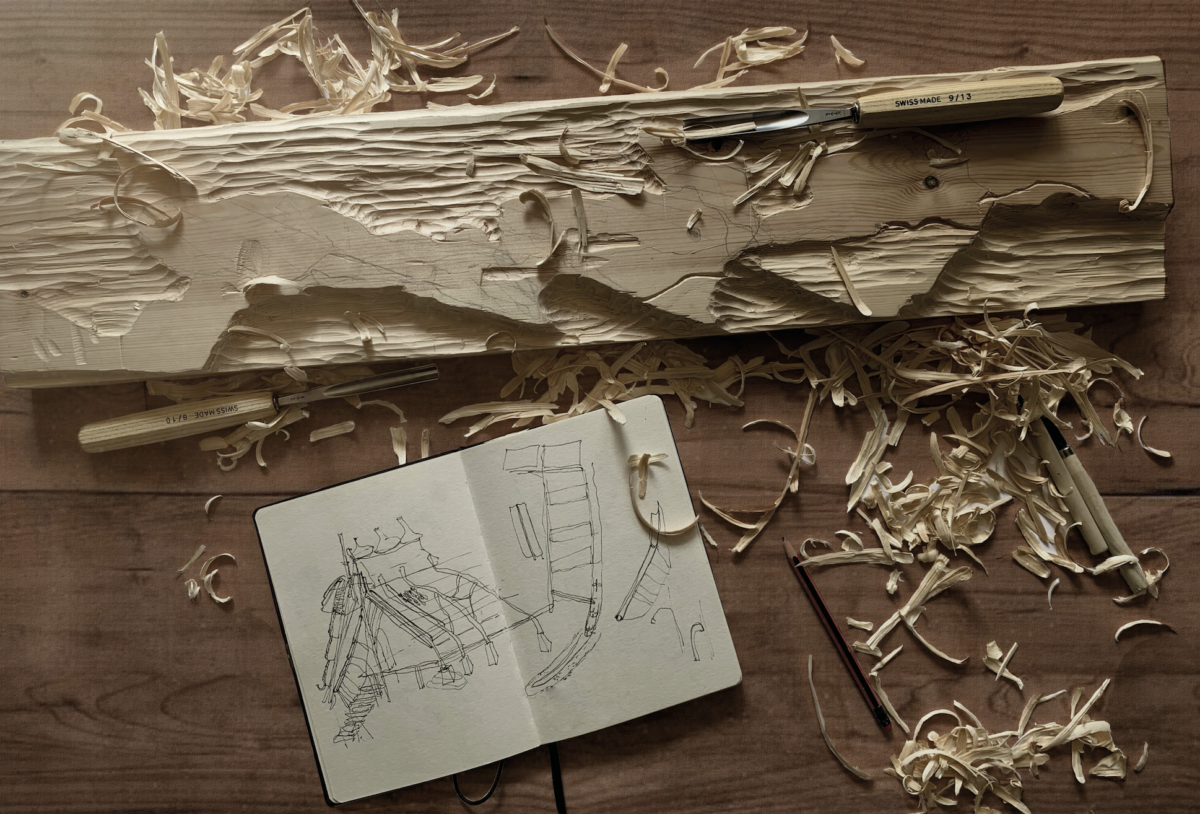
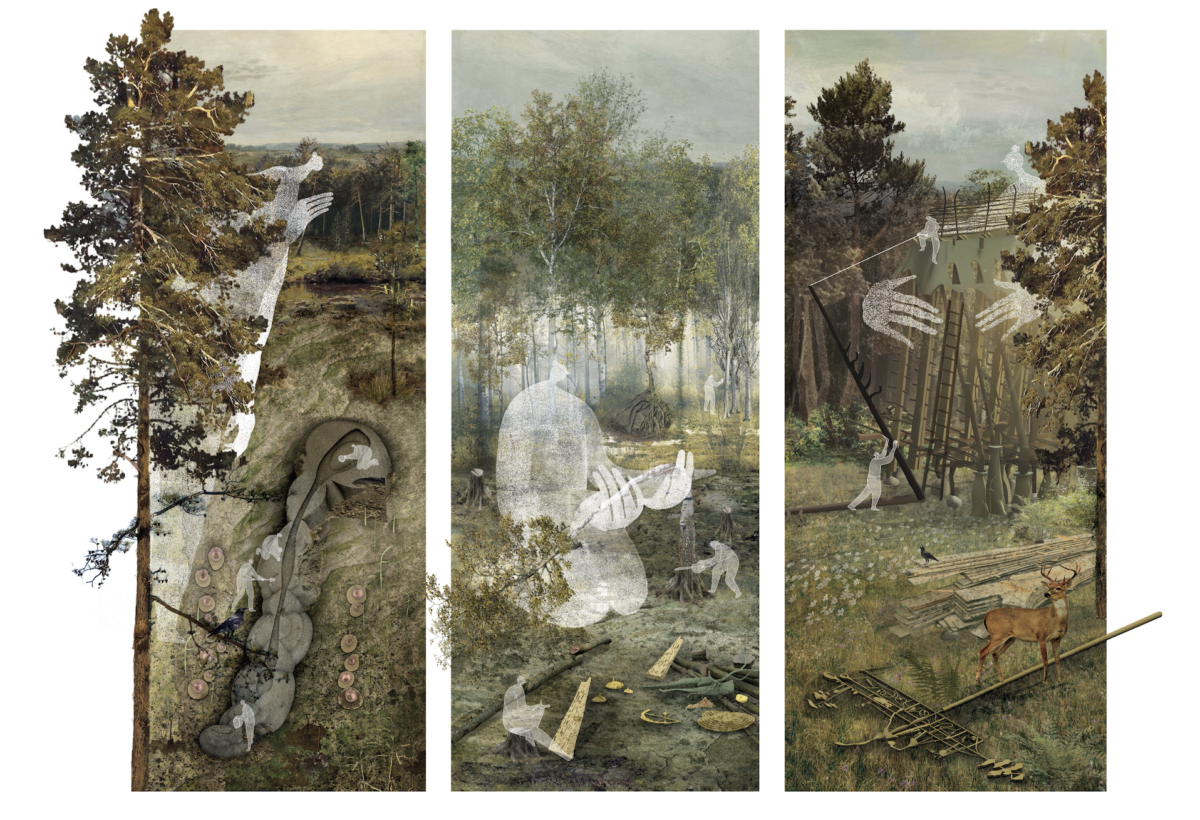

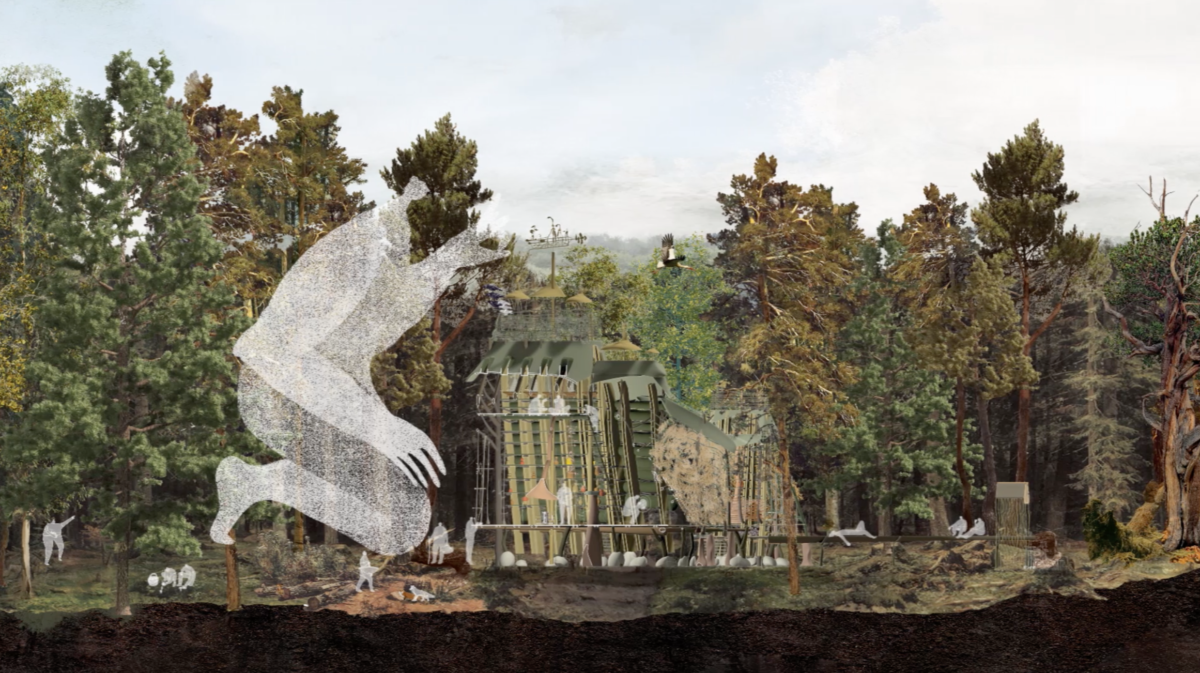
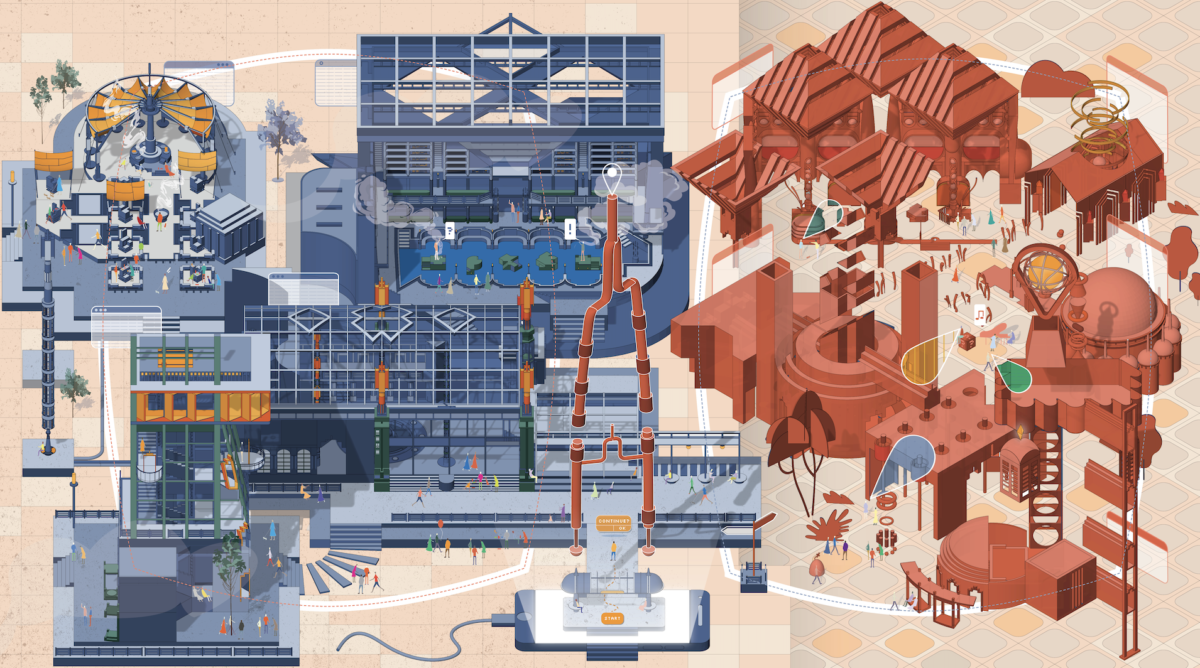
Virtually Public
What does it mean to be in public? The reality of public spaces is one of urban desertification in favour of private virtual spaces, handing the scale of human interaction within the city over to machine learning and algorithm control. Sited in Somerstown’s dwindling use of formal public space, and speculates a public realm where the public rules by siting a virtual townhall within the future expiration of Story Garden’s meanwhile tenure. Although it appears in physical reality as a public retreat, it is transformed through an augmented reality to become a townhall, taking an integrated form of two parts where one reality suggests the existence of the other. The proposed become speculations into asking how the civic, social, and virtual constructs of future publicness alters the nature of who we are and how we interact in public space, how we gather local information and meanings of civic symbolism. It uses real-time interactive game technologies to test user(human) freedom of determination and ultimately asks if the private development of digital technologies can indeed make a space virtually public.
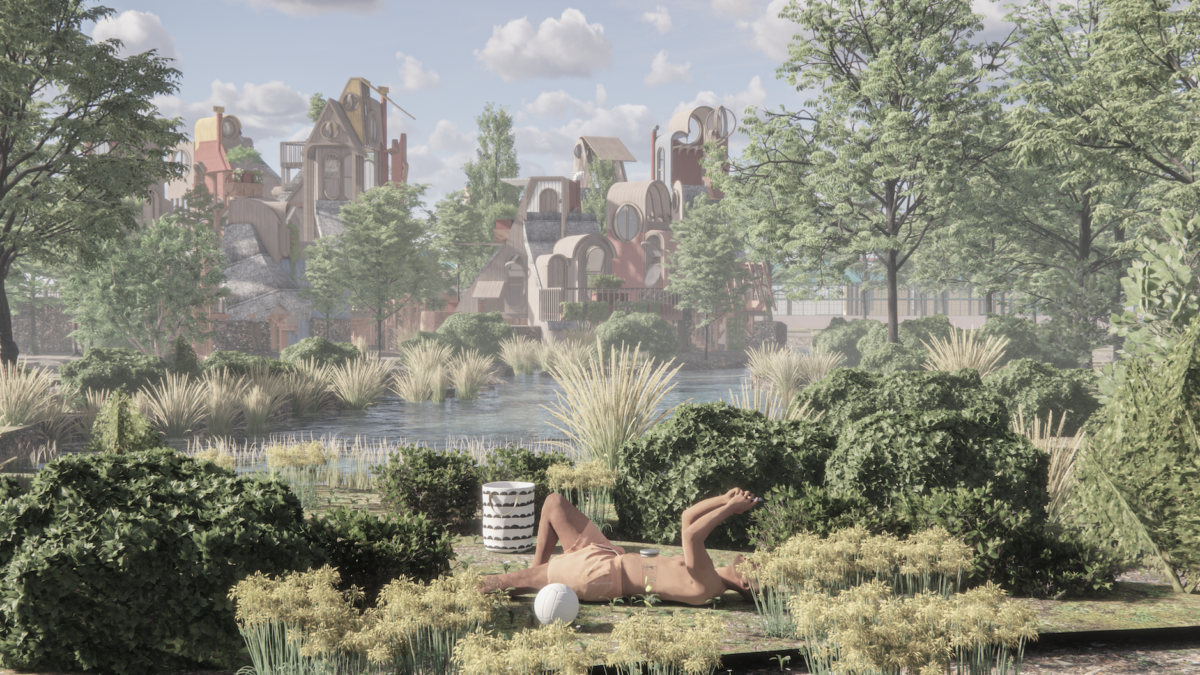
The New Rural
Radical change is needed to evolve the way in which we inhabit our natural world. The evidence is damning, it is already too late to stop our changing climate. By 2050 the effect of rising temperatures, increased flooding and extreme weather will make our existing built environment unfit for inhabitation.
The New Rural is a manifesto, guide and proposition for the necessary realisation of Arcadia in Britain. Looking to the past century, there have been radical movements that idealise the countryside as a canvas for new ideas; just outside of London, to the east, Essex stands as a test bed for these radical rural ideas. The New Rural turns to Essex as a case study to prove the efficacy of the rural once more. The culmination of The New Rural has been an effort to undesign Essex by providing a guide to a settlement typology. This typology is based on a new model for the Faceted Family, an amorphous model based on our communal relationships to each other and to the nature that surrounds us. The New Rural establishes a guide to allow communities to construct their own Arcadia, a utopia in the British countryside.
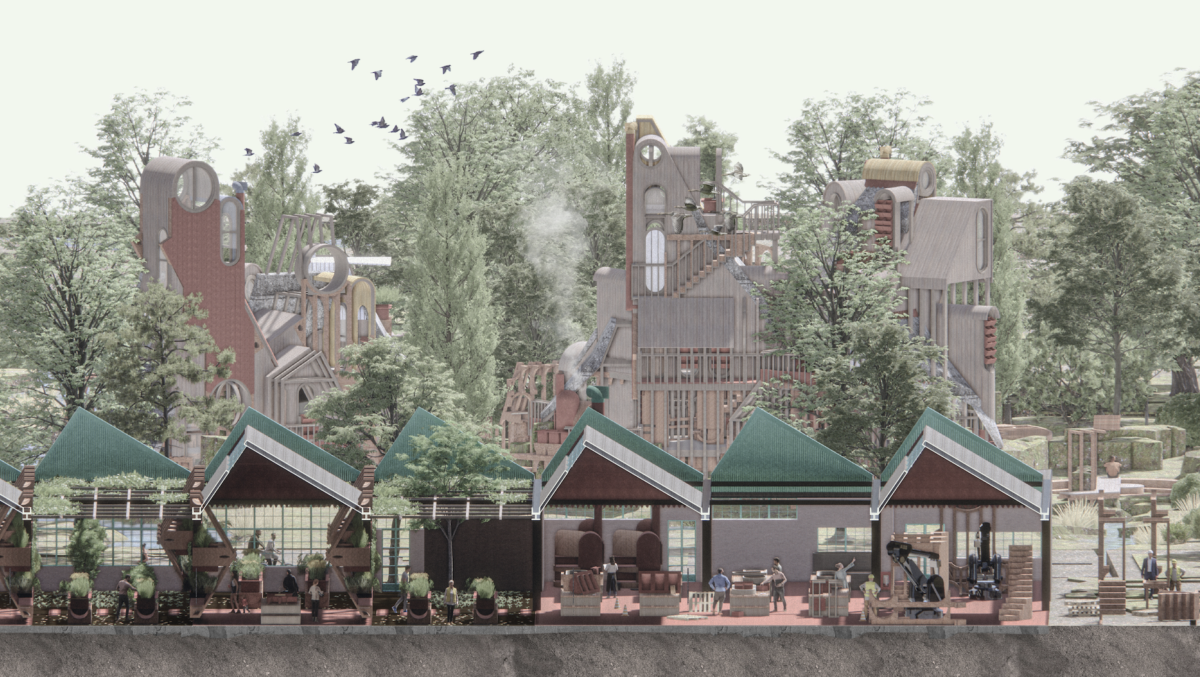
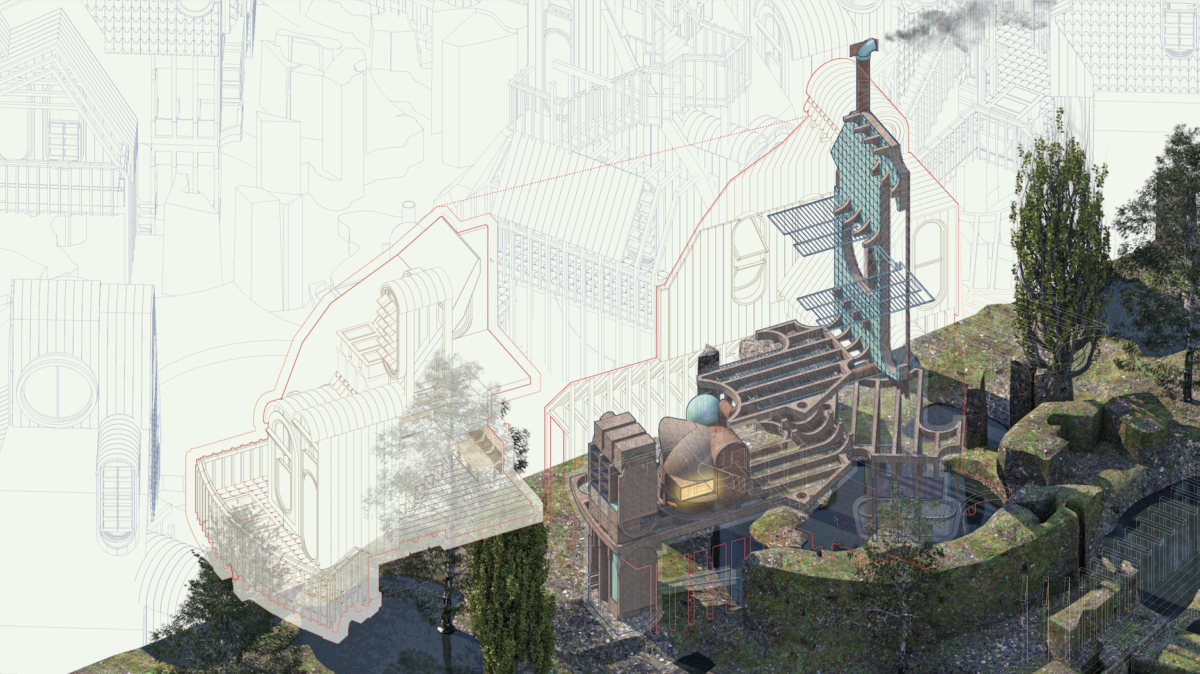
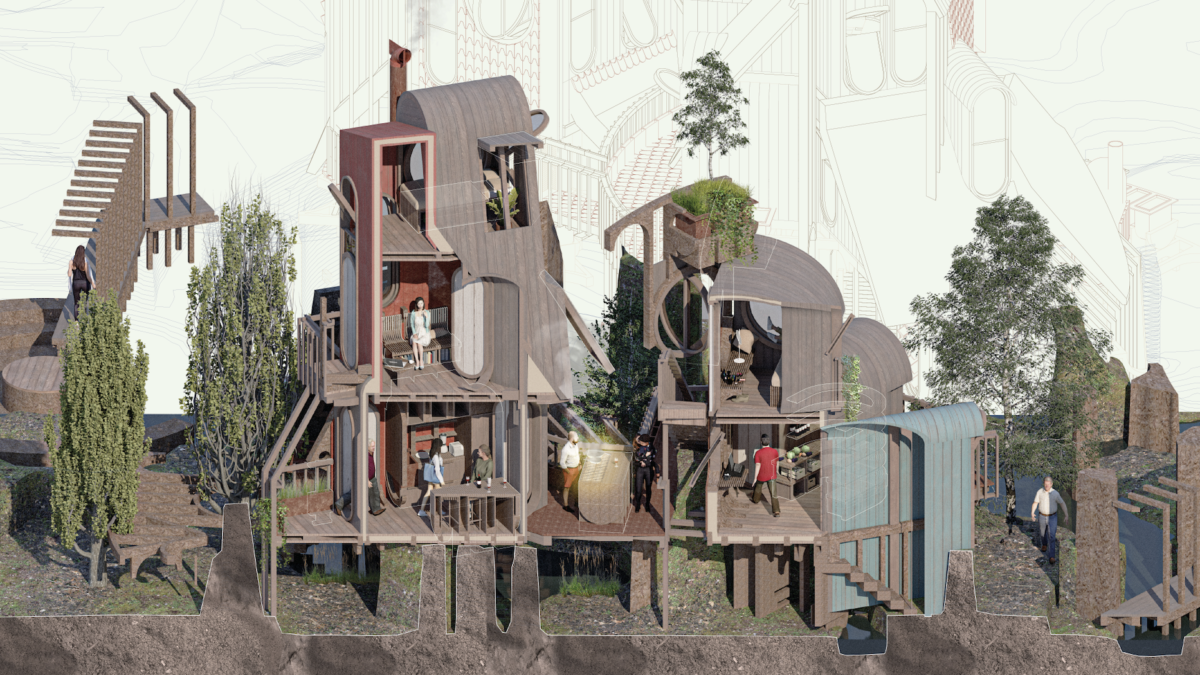
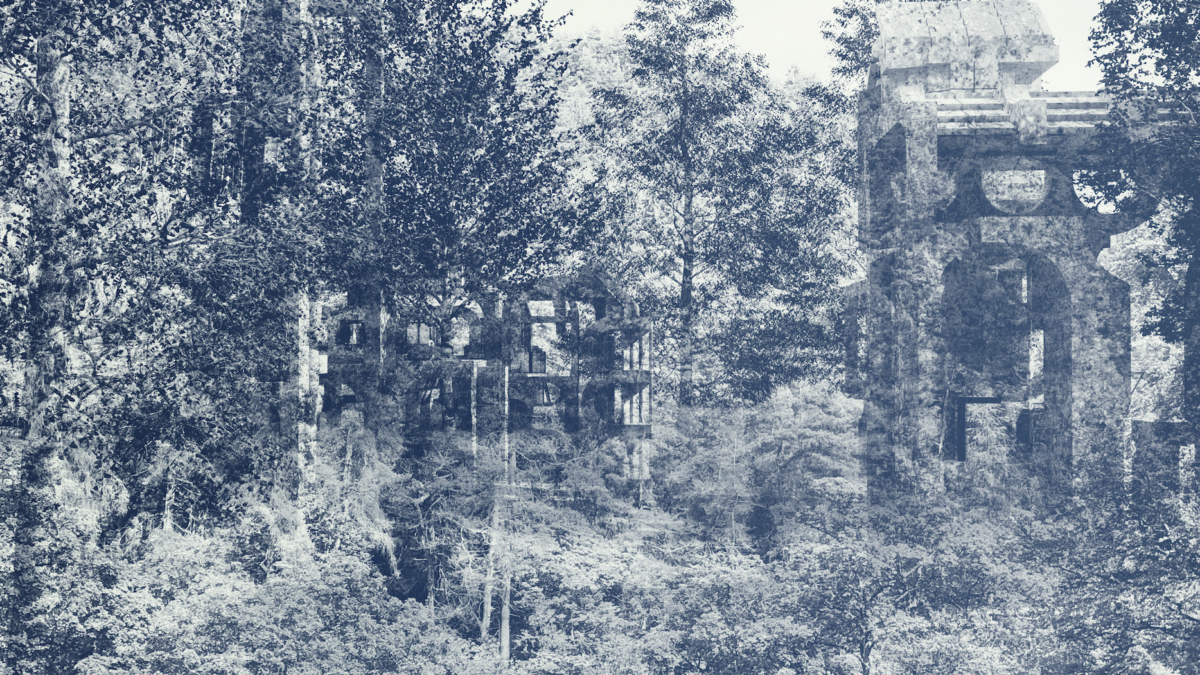
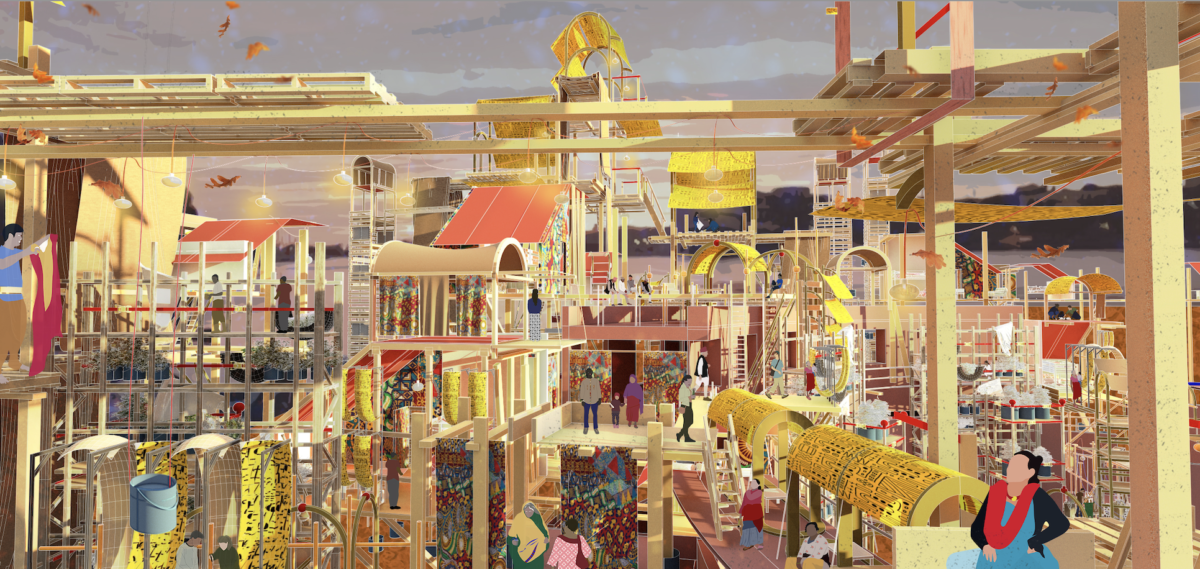
Collegio Reborn
The project, Collegio Reborn, looks at a new way of using collectives of materials that, through up-cycling systems, can mirror the interaction of different groups of individuals with the hosting The project, Collegio Reborn, looks at a new way of using collectives of materials that, through up-cycling systems, can mirror the interaction of different groups of individuals with the hosting territory. The project also investigates the new role of the architect as a mediator among different entities and authorities, done through phases. The engagement with community latches upon participatory tools, eventually associated with individuals’ specialism. The second phase focuses on the making and self-building aspect that integrates parts of the existing building with new living components. The third phase is a social act led by the community, preserving the independence as well as the collaborative spirit of the different groups coexisting and working in the makers’ hub as well as in the communal kitchen. Indeed, Collegio Reborn uses the city of Brindisi to revitalise a neglected part of the city – offering an opportunity for a collective rebirth, not always peaceful and rather tumultuous. Owing to the above, the city of Brindisi becomes the future New European Bauhaus capital, as its scheme best represent the key points of the movement: inclusivity, environmental benefits and a new collective design approach.
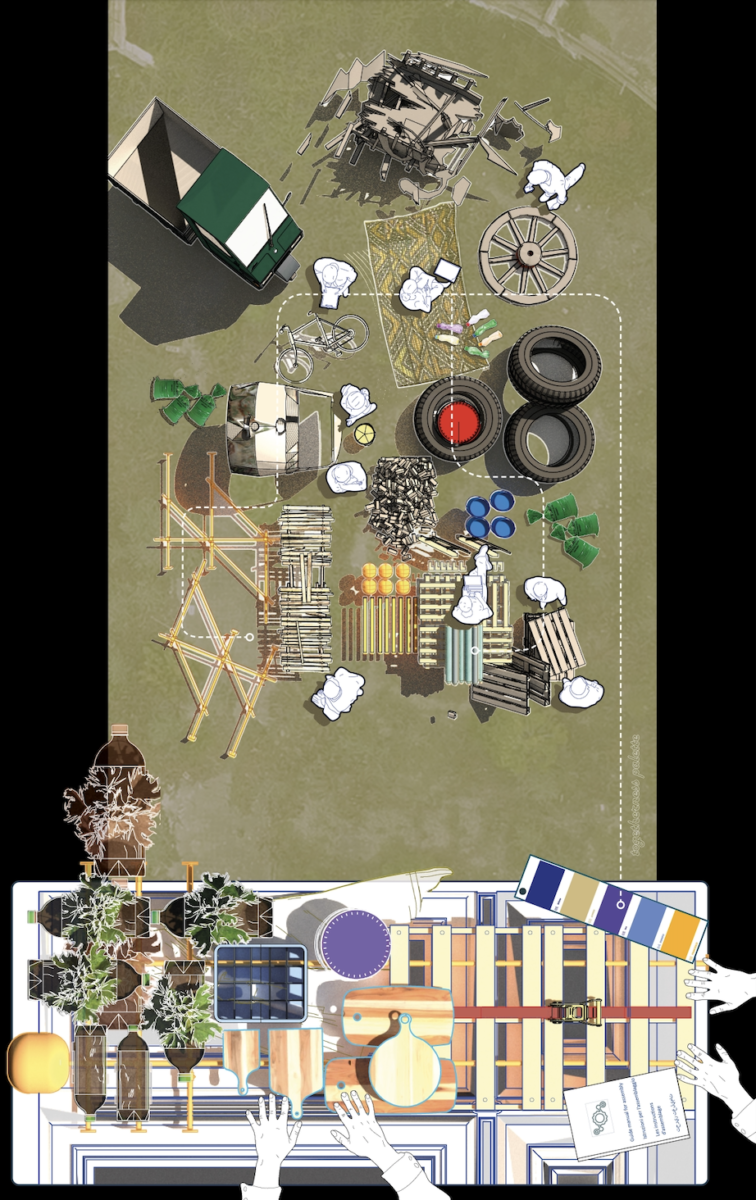
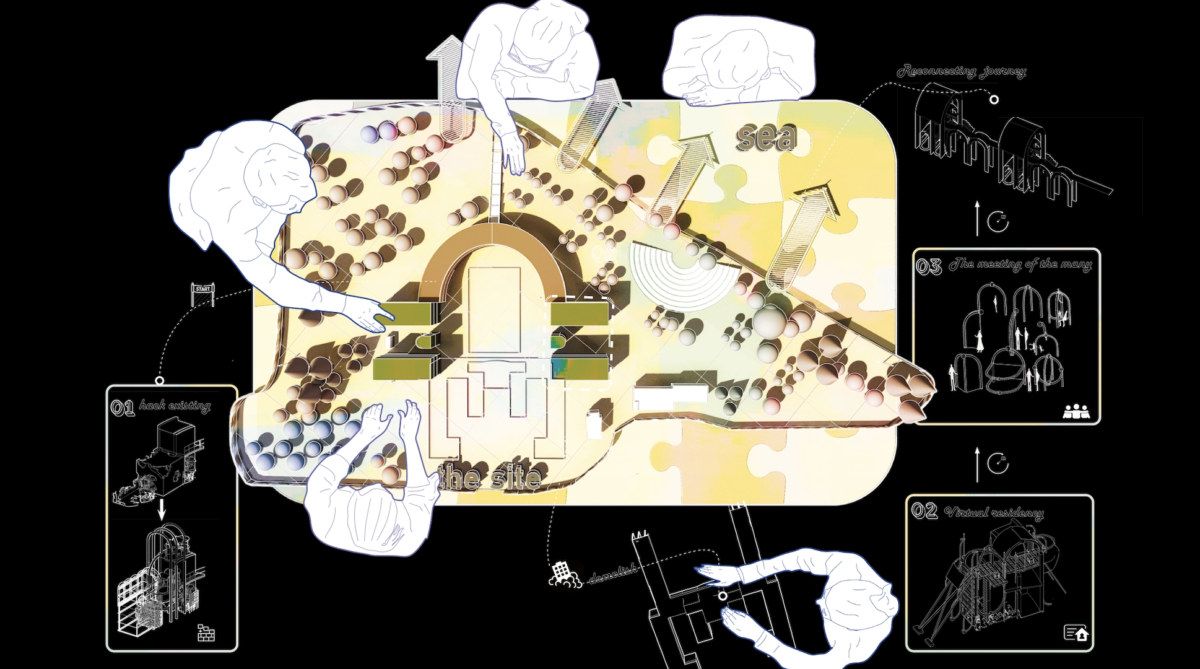
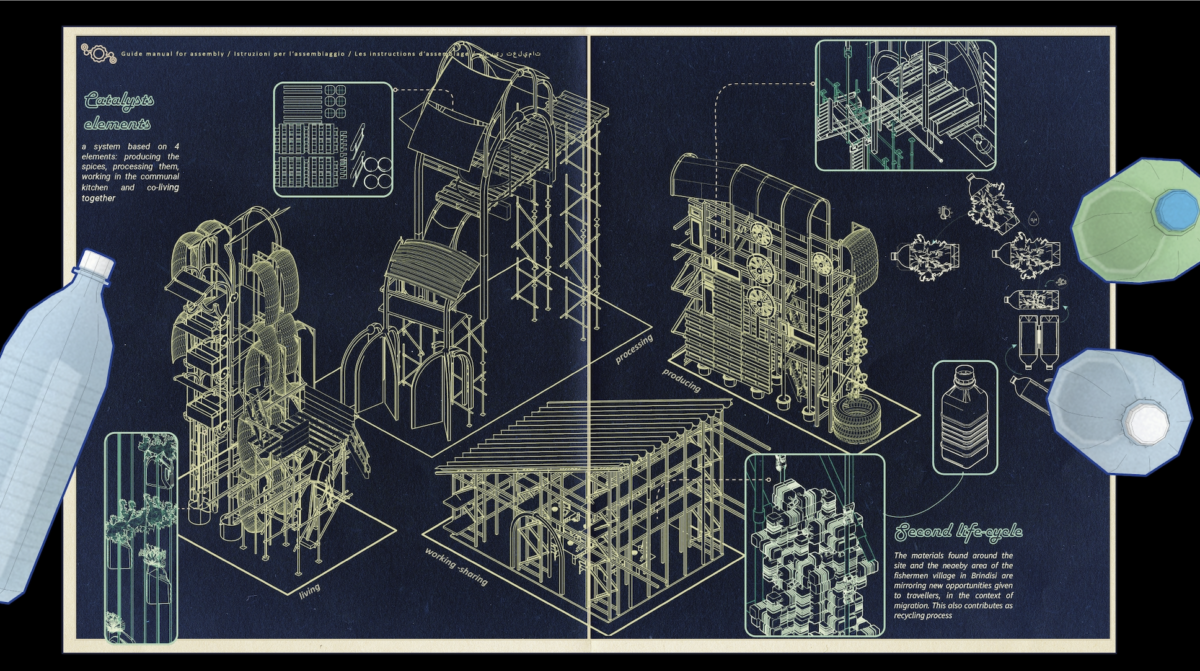
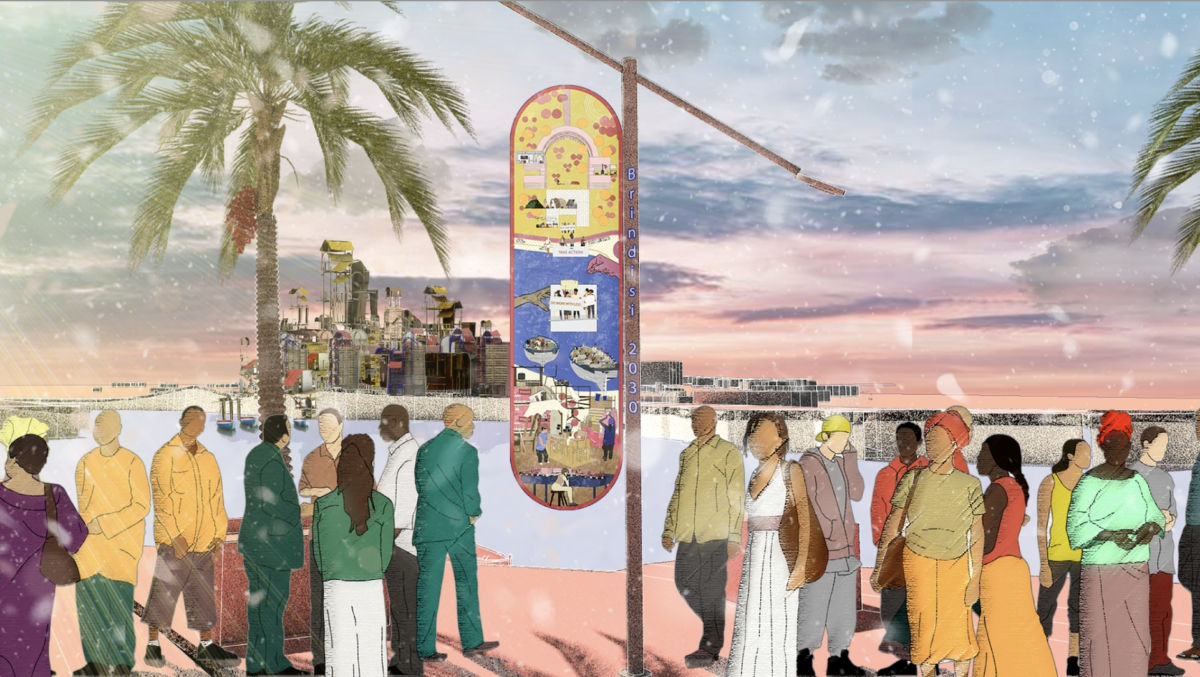
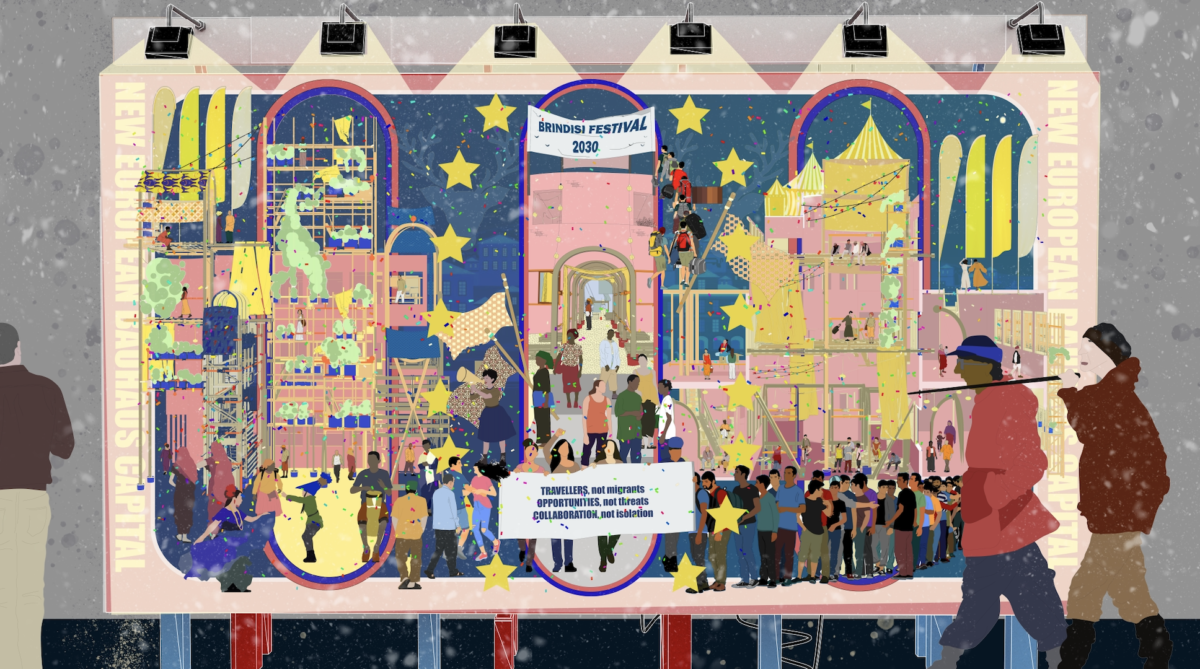
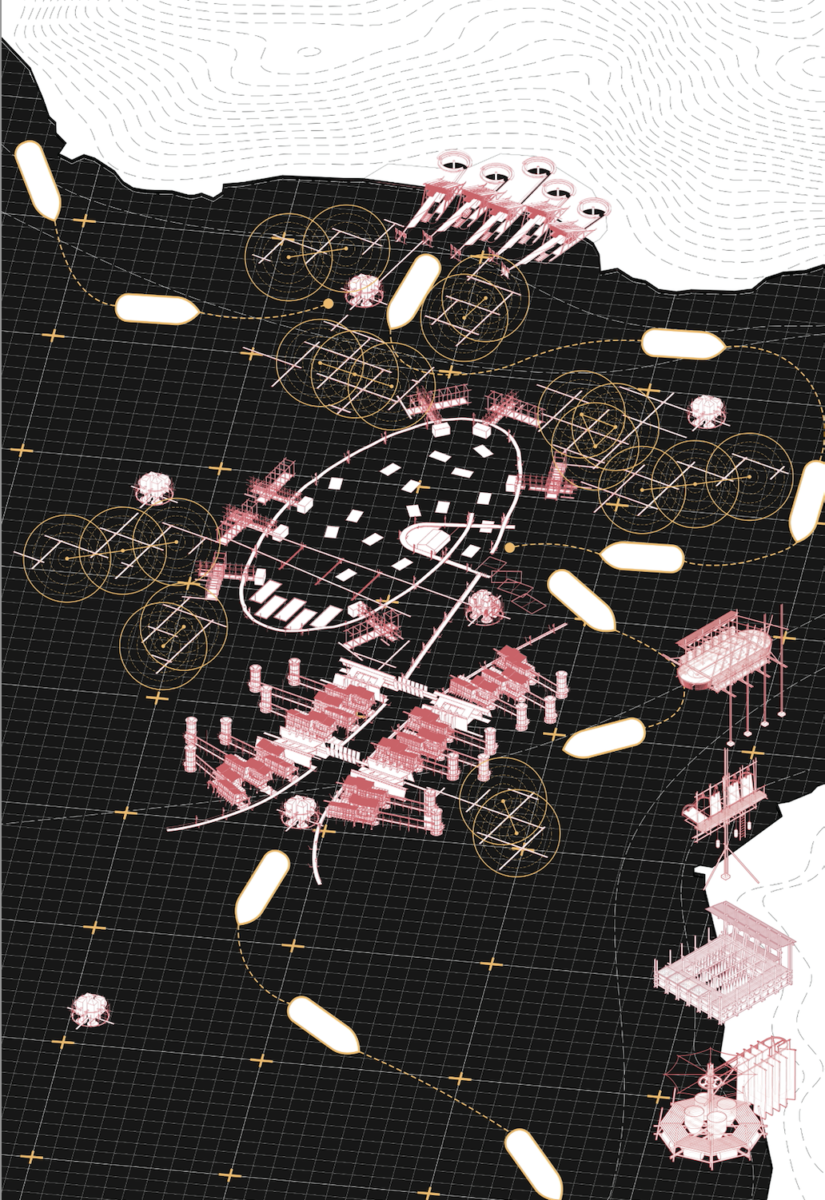
Isle of Lunar-Sea
Amidst proposals for the construction of a 1,700ha artificial island within Hong Kong’s archipelago, Isle of Lunar-Sea offers alternatives to the city’s longstanding reclamation methods. The project proposes construction of a floating city for marginalised locals, including dwindling indigenous Tanka boat-dwellers, the 200,000+ invisible residents of subdivided flats and the sole inhabitant of Sunshine Island at the reclamation plan’s centre.
The city’s model masterplan establishes reconnections to HK’s broader marine surroundings and its role as a traditional refuge. Linkages to lunisolar dates, tidal change, and maritime geography form the basis of the city’s comprising architectures, both floating and stilted. Enabled by the sea’s flexibility, inhabitation of the city remains ever-changing around the dominant spatial organizations, suiting seasonal and future climates. The founding settlement begins in elevated intertidal residences on Sunshine Island, later expanding over shallow marine terrace depths with an artificial typhoon shelter composed of anchored sediment nets. Tide-operated residences straddle this whilst productive cultural rafts inhabit the interior. Over deeper waters, rows of floating housing modules and productive community centres border a canal-like waterway. Outside these, tidal markets dot the site as guiding waypoints, whilst grids of floating walkways expand from residences, supporting a productive landscape of free-roaming cultural modules.
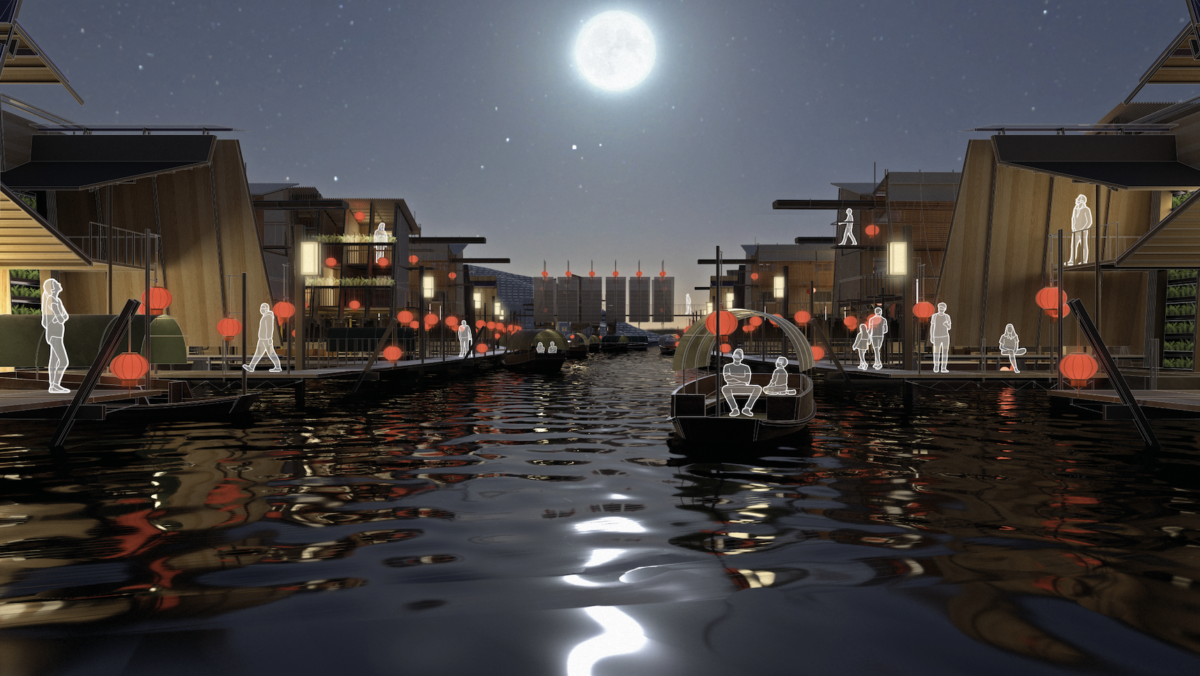
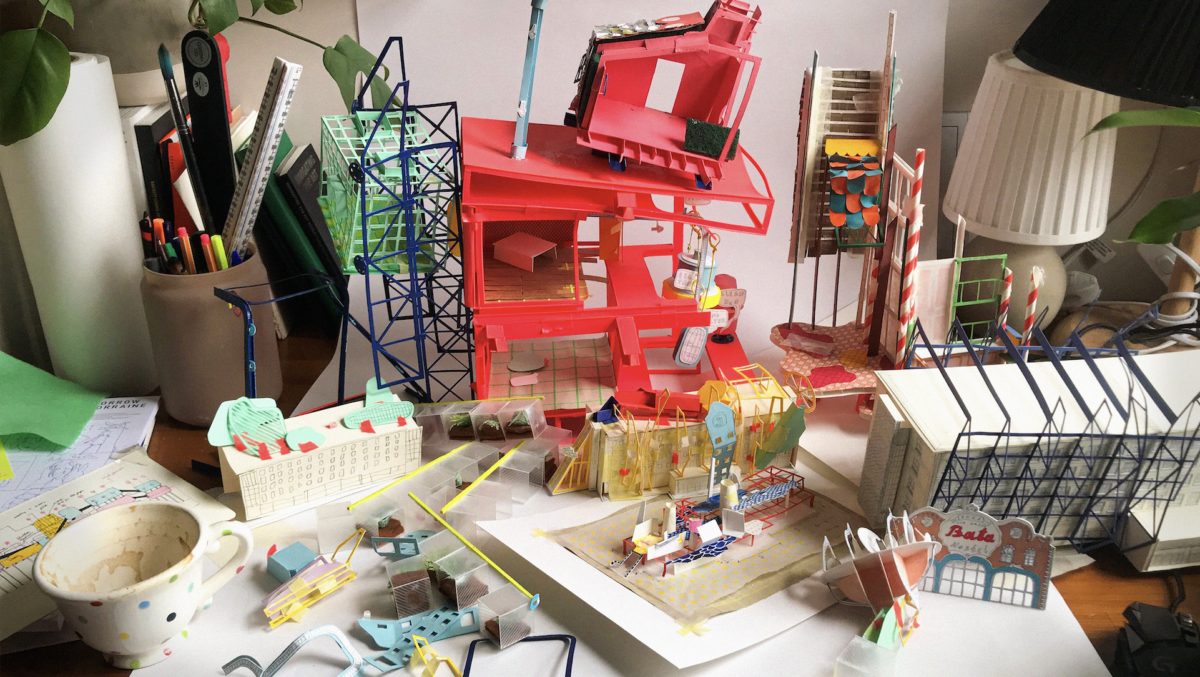
The Grand BATA Hostel
The Grand Bata Hostel is a project that continues researching alternative methods of living and building construction. It investigates how emphasizing the absurdity and questioning the everyday can evolve into playfulness and how it can affect East Tilbury’s community.
East Tilbury has a lot of personalities with twisted stories. The choice of the narrative in Term 1 is Stacey, a local hairdresser. She has heard enough gossips through creating a mobile hairdresser’s salon – ‘Stacey’s KITSCHen’, a perfect place to encourage the community to be able to share the extraordinary stories of Bata-ville.
Term 2 has revisited a local storytelling with the main character as a narrator of the story of The Grand Bata Hostel. The project takes an inspiration from Wes Anderson’s The Grand Budapest Hotel, where the ‘over the top’ principles are applied. The project has a form of an unconventional megastructure wrapped around Stanford House, where the residents are the main characters of the living construction, benefitting from the new approach in bringing back the community spaces and providing the additional extensions. The community also helps young homeless adults, who are seeing temporary accommodation in the hostel, gaining skills to help them in seeking better future.

